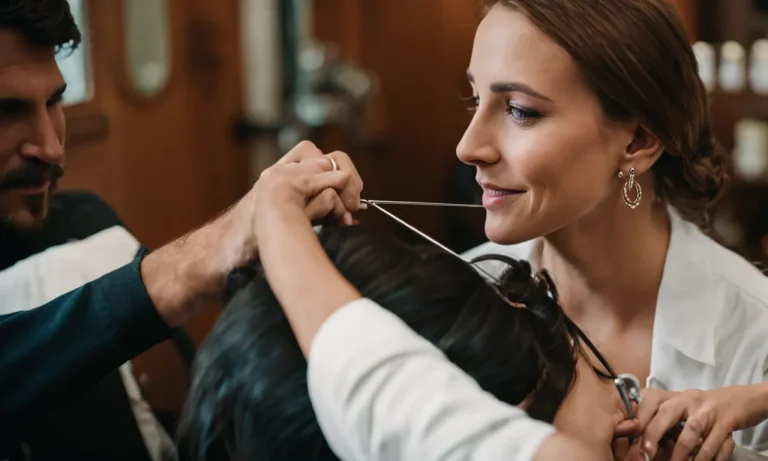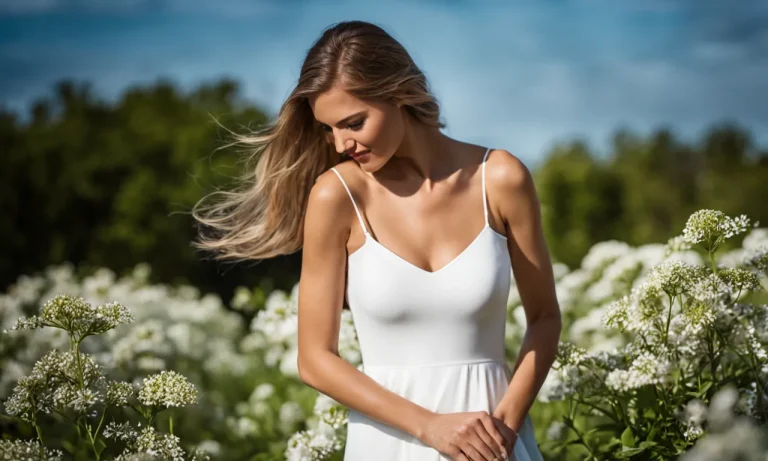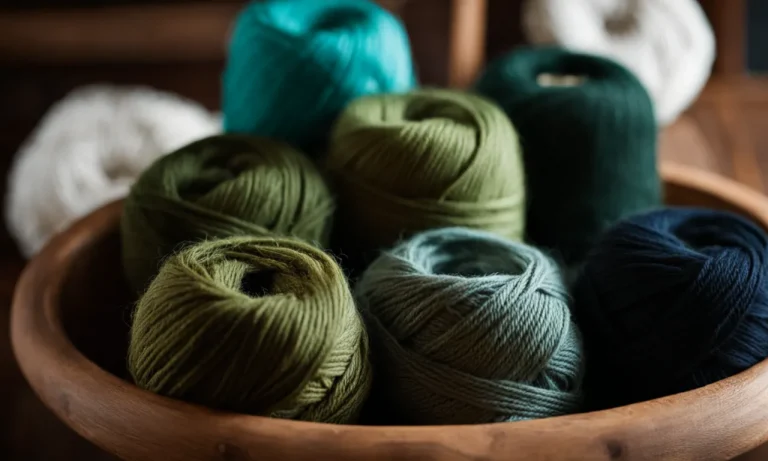Do Green And Brown Match? A Detailed Look At Color Theory And Decor
Colors can evoke emotions, set a mood, and bring harmony or discord to a space. Whether you’re redecorating a room, designing an outfit, or creating a painting, combining the right colors is key. So do green and brown go well together? Let’s take a detailed look at color theory to find out.
If you’re short on time, here’s a quick answer: Green and brown can absolutely work well together and complement each other beautifully, especially earthy shades like sage green, olive green, moss green, tan, beige, and lighter browns. The key is sticking to tones in the same color family.
The Basics of Color Theory
Understanding color theory is essential when it comes to creating harmonious and visually appealing decor schemes. By knowing the fundamentals of color theory, you can easily create a cohesive look in your home.
Let’s explore the basics of color theory and how it can be applied to your interior design.
Color Wheel
The color wheel is a tool that organizes colors in a circular format, making it easier to understand their relationships. It is divided into primary colors (red, yellow, and blue), secondary colors (orange, green, and violet), and tertiary colors (red-orange, yellow-orange, yellow-green, blue-green, blue-violet, and red-violet).
By understanding the color wheel, you can create color schemes that are visually appealing and balanced. For example, complementary colors are opposite each other on the color wheel, such as blue and orange or red and green.
These combinations create a high contrast and can be used to make certain elements stand out in a room.
Color Harmonies
Color harmonies are combinations of colors that are visually pleasing to the eye. There are several types of color harmonies, including complementary, analogous, triadic, and monochromatic.
Complementary color harmonies use colors that are opposite each other on the color wheel. Analogous color harmonies use colors that are adjacent to each other. Triadic color harmonies use three colors that are evenly spaced on the color wheel.
Monochromatic color harmonies use different shades and tints of the same color.
By understanding color harmonies, you can create a unified and balanced look in your home. Whether you want to create a bold and dramatic space or a calm and serene atmosphere, color harmonies can help you achieve the desired effect.
Color Temperature
Color temperature refers to the perceived warmth or coolness of a color. Warm colors, such as red, orange, and yellow, evoke feelings of energy and excitement. Cool colors, such as blue, green, and violet, create a sense of calm and relaxation.
Understanding color temperature can help you create the right mood and ambiance in your home. For example, if you want to create a cozy and inviting living room, you can use warm colors like red and orange.
If you want to create a serene and peaceful bedroom, you can use cool colors like blue and green.
Color theory is a powerful tool that can transform your home decor. By understanding the color wheel, color harmonies, and color temperature, you can create a visually pleasing and harmonious space that reflects your personal style and taste.
Shades that Work
When it comes to color theory and decor, finding shades that work well together is essential. One popular combination to explore is the pairing of green and brown. These earthy tones can create a harmonious and natural feel in any space.
Let’s take a detailed look at how different shades of green and brown can complement each other in interior design.
Earthy Greens
Earthy greens, such as olive, sage, and moss, are versatile shades that work exceptionally well with various types of brown. These greens have a calming and soothing effect, making them ideal for creating a serene atmosphere in a room.
When paired with warm brown tones, like walnut or chestnut, the result is a cozy and inviting space. The contrast between the green and brown creates a balanced and visually pleasing look.
For those who prefer a more vibrant and energetic feel, brighter shades of green, such as lime or chartreuse, can be paired with lighter brown tones like tan or beige. This combination adds a pop of color to the decor while still maintaining a natural and earthy aesthetic.
Warm Browns
Warm brown shades, such as chocolate, caramel, and rust, can provide a rich and luxurious feel to a space. These deep hues pair well with various shades of green, creating a sophisticated and elegant look.
When combined with darker shades of green, like forest or emerald, the result is a dramatic and opulent ambiance.
For a more subtle and subdued effect, lighter shades of brown, such as taupe or sand, can be paired with softer greens like mint or seafoam. This combination creates a fresh and airy atmosphere, perfect for creating a tranquil and relaxing space.
Accent Colors
While green and brown create a beautiful base palette, incorporating accent colors can elevate the overall look of a room. Depending on the desired mood and style, accent colors can be used to add contrast, create visual interest, or infuse a touch of personality.
For a modern and vibrant look, accents of bright yellow or orange can be added to a green and brown color scheme. These bold colors create a striking contrast and inject energy into the space.
On the other hand, for a softer and more romantic feel, accents of blush pink or lavender can be incorporated. These delicate hues complement the natural tones of green and brown, creating a charming and feminine atmosphere.
Remember, the key to successfully combining green and brown is to experiment and trust your instincts. Play around with different shades and combinations to find the look that best suits your style and preferences. Happy decorating!
Combining Textures and Patterns
When it comes to interior design, one of the key elements to consider is the combination of textures and patterns. The right combination can add depth and visual interest to a space, while the wrong combination can make it feel cluttered and overwhelming.
In this section, we will explore different ways to combine textures and patterns to create a harmonious and visually appealing look.
Natural Textures
Natural textures, such as wood, stone, and woven materials, can add warmth and a sense of nature to any space. Combining these textures can create a rustic or bohemian aesthetic, bringing a touch of the outdoors inside.
For example, pairing a rough-hewn wooden coffee table with a jute rug and linen throw pillows can create a cozy and inviting living room. Natural textures can also be mixed with other textures and patterns, such as pairing a leather sofa with a geometric patterned rug for a modern and eclectic look.
Geometric and Organic Patterns
Geometric and organic patterns can add visual interest and a sense of movement to a space. Geometric patterns, such as stripes, chevron, and herringbone, can create a modern and structured look. On the other hand, organic patterns, like floral prints or watercolor designs, can create a more whimsical and natural feel.
Mixing these patterns can create a dynamic and visually appealing space. For example, pairing a geometric patterned wallpaper with a floral print armchair can add a playful and eclectic touch to a bedroom or living room.
Mixing Textures
One way to create a visually interesting space is by mixing different textures. This can be done by combining smooth and rough textures, shiny and matte surfaces, or soft and hard materials. For example, pairing a plush velvet sofa with a rustic wooden coffee table and a shiny metallic lamp can create a balanced and visually appealing living room.
Mixing textures adds depth and dimension to a space, making it more visually interesting and inviting.
Remember, when combining textures and patterns, it’s important to consider the overall color scheme and style of the room. Opt for colors that complement each other and patterns that work well together.
Don’t be afraid to experiment and have fun with different combinations until you find the perfect balance for your space.
Green and Brown Color Schemes for Rooms
Living Room
When it comes to creating a green and brown color scheme for your living room, the key is finding the right balance. Green and brown are both earthy tones that can create a soothing and natural atmosphere in your space.
One popular approach is to use green as the dominant color and brown as an accent. For example, you can paint the walls a soft shade of green and incorporate brown furniture and decor pieces to add warmth and depth to the room.
Another option is to use brown as the base color and incorporate pops of green through pillows, curtains, or artwork. This can create a more subtle and understated look while still maintaining the overall green and brown theme.
Bedroom
In the bedroom, a green and brown color scheme can create a tranquil and relaxing environment. One idea is to use a light shade of green on the walls to create a fresh and calming backdrop. Pair this with brown bedding, curtains, and furniture to create a cozy and inviting atmosphere.
Another option is to use a deep shade of green on an accent wall and incorporate brown elements through the bedding and accessories. This can create a more dramatic and sophisticated look in the bedroom.
Bathroom
For the bathroom, a green and brown color scheme can add a touch of nature and serenity. Consider using green tiles or paint on the walls and pair it with brown accents such as towels, shower curtains, and bath mats.
This combination can create a spa-like atmosphere and make your bathroom feel like a peaceful oasis. Additionally, incorporating natural elements such as plants or wooden accessories can further enhance the green and brown theme.
Kitchen
In the kitchen, a green and brown color scheme can create a warm and inviting space. One idea is to use green cabinets or a green backsplash paired with brown countertops and flooring. This combination can add a touch of freshness and earthiness to your kitchen.
Alternatively, you can use brown cabinets or countertops as the base and incorporate green accents through kitchen accessories, such as green utensils or plants. This can create a more subtle and balanced green and brown color scheme in your kitchen.
Entryway
The entryway sets the tone for your home, and a green and brown color scheme can create a welcoming and natural atmosphere. Consider painting the walls a soft shade of green and incorporating brown elements through a wooden console table or a brown rug.
This can create a harmonious and inviting space for guests as they enter your home. Additionally, adding green and brown accents, such as artwork or plants, can further enhance the overall theme of the entryway.
Outfit Inspiration with Green and Brown
When it comes to fashion, combining different colors can create eye-catching and stylish outfits. One color combination that often raises questions is green and brown. Many people wonder if these two earthy tones can truly match and create a cohesive look. The answer is a resounding yes!
Green and brown can be paired together to create stunning outfits for various occasions. Let’s explore some outfit inspiration ideas with these colors.
Earth Tone Business Casual
For a sophisticated and professional look, green and brown can be combined in a business casual outfit. Pair a tailored brown blazer with a light green blouse and dark brown trousers. Complete the look with brown or green accessories, such as a leather belt and a pair of pumps.
This combination exudes elegance and confidence, making it perfect for a day at the office or a business meeting.
Weekend Wear
When it comes to casual weekend wear, green and brown can create a laid-back yet stylish ensemble. Try wearing a olive green utility jacket with a pair of brown skinny jeans. Add a white t-shirt and brown ankle boots to complete the look.
This outfit is perfect for running errands, grabbing coffee with friends, or exploring the city. It combines comfort and fashion effortlessly.
Evening Ensemble
For a chic and glamorous evening look, green and brown can be combined in a stunning ensemble. Wear a dark green velvet dress with brown strappy heels. Add a statement brown clutch and gold accessories to complete the look.
This combination is perfect for a cocktail party, a date night, or any special occasion. It’s a sophisticated and unique choice that will surely turn heads.
Remember, fashion is all about experimenting and expressing your personal style. Green and brown can definitely match and create beautiful outfits. Don’t be afraid to mix and match different shades and textures to create unique and eye-catching looks.
So go ahead, embrace the combination of green and brown, and let your fashion creativity shine!
Conclusion
Green and brown can make for gorgeous, soothing color combinations when used artfully together. Stick to earthy hues within the same color family and add interest with natural textures and patterns. Use green and brown together throughout your home, wardrobe, or artwork to create relaxing, organic spaces.
Thoughtfully blending these versatile neutrals can fill any room with life and beauty.







